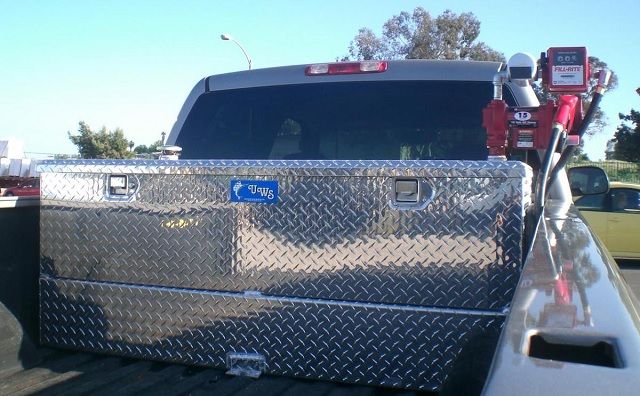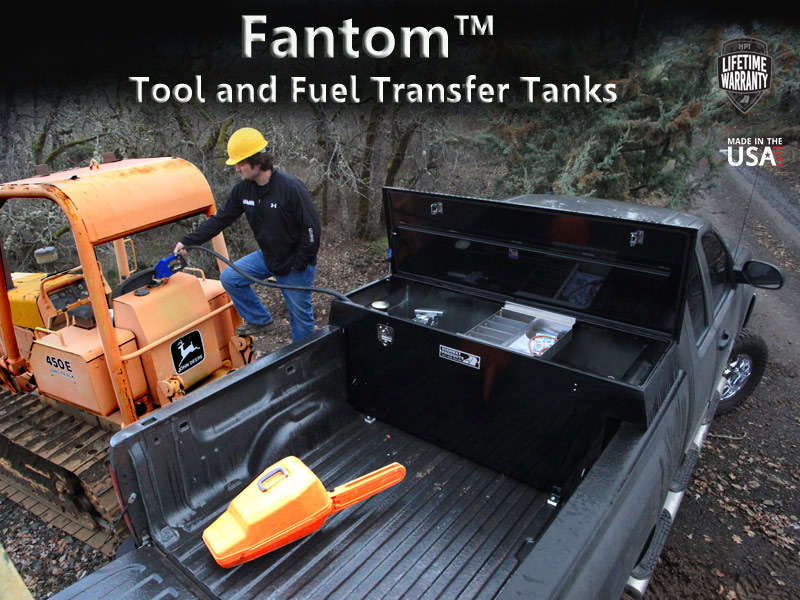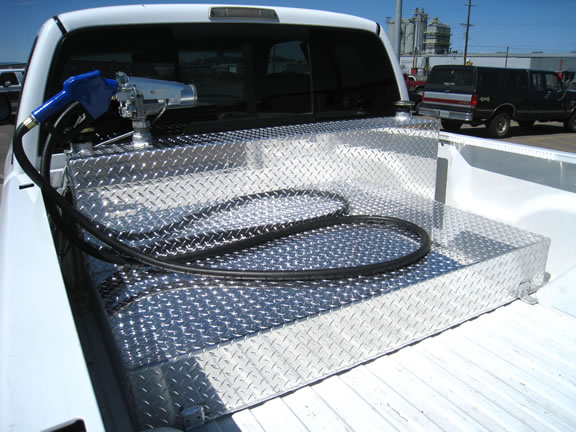Transfer Fuel Tanks For Pickup Trucks: Your Ultimate Guide to Extended Range and On-Demand Fuel pickup.truckstrend.com
In the world of pickup trucks, versatility is king. From hauling equipment to navigating remote job sites or embarking on epic cross-country adventures, a truck’s utility is often limited only by its fuel capacity. This is where transfer fuel tanks for pickup trucks become an indispensable asset. More than just a simple container, these auxiliary fuel systems transform your truck into a mobile fueling station, offering unparalleled convenience, extended range, and significant cost savings.
This comprehensive guide will delve into every aspect of transfer fuel tanks, from their fundamental design to their myriad benefits, crucial safety considerations, and the legal landscape surrounding their use. Whether you’re a contractor, an off-grid enthusiast, or simply someone who appreciates preparedness, understanding these systems is key to maximizing your truck’s potential.
Transfer Fuel Tanks For Pickup Trucks: Your Ultimate Guide to Extended Range and On-Demand Fuel
What Are Transfer Fuel Tanks? Unlocking Mobile Fueling Solutions
At its core, a transfer fuel tank is an auxiliary fuel storage unit designed to be securely mounted in the bed of a pickup truck. Unlike your truck’s primary fuel tank, these units are specifically engineered for the safe transport and dispensing of fuel to other vehicles, machinery, or even your truck’s main tank. They typically consist of a robust tank, often made from durable materials like aluminum, steel, or polyethylene, equipped with a pump, hose, and nozzle for efficient fuel transfer.
The primary purpose of a transfer tank is to provide on-demand fuel in situations where traditional gas stations are scarce, inconvenient, or prohibitively expensive. This makes them invaluable for:
- Extended Range: Covering vast distances without worrying about fuel stops.
- Fueling Equipment: Powering generators, ATVs, tractors, construction equipment, or boats in remote locations.
- Cost Savings: Purchasing fuel in bulk when prices are lower, or avoiding premium prices in isolated areas.
- Emergency Preparedness: Ensuring a reliable fuel supply during power outages or natural disasters.

The Unrivaled Benefits of Auxiliary Fuel Storage
The advantages of installing a transfer fuel tank extend far beyond merely carrying more fuel. They offer a strategic edge for both professional and recreational users:

- Uninterrupted Journeys: For long-haul truckers, RV enthusiasts, or those traversing vast, unpopulated regions, a transfer tank eliminates range anxiety. You can bypass multiple fuel stops, saving time and staying on schedule.
- Significant Cost Savings: Fuel prices fluctuate wildly and are often higher in remote or less competitive areas. With a transfer tank, you can fill up when prices are low, effectively hedging against market volatility and saving a substantial amount over time, especially for high-volume users.
- On-Site Equipment Fueling: Contractors, farmers, and landscapers frequently operate equipment that consumes fuel rapidly. Instead of transporting cumbersome jerry cans or driving equipment to a gas station, a transfer tank allows for convenient, immediate refueling directly on the job site.
- Emergency Preparedness: In scenarios like power outages, natural disasters, or off-grid living, having a substantial supply of fuel for generators, heating systems, or other essential equipment can be a lifeline.
- Enhanced Productivity: Reducing time spent on fuel runs translates directly into more productive work hours, whether on a job site or during a recreational outing.
- Reduced Wear on Equipment: Constantly starting and stopping heavy equipment or driving it long distances just for fuel can accelerate wear and tear. On-site refueling minimizes this stress.

Types and Materials: Choosing Your Ideal Tank
Transfer fuel tanks come in a variety of configurations, each designed to meet specific needs and preferences. Understanding these differences is crucial for making an informed decision.
Tank Materials: Durability Meets Performance
- Aluminum:
- Pros: Lightweight (reduces payload impact), highly corrosion-resistant, excellent heat dissipation, premium appearance.
- Cons: More expensive than steel or polyethylene, can be susceptible to dents.
- Ideal For: Users prioritizing weight savings, aesthetics, and long-term durability, especially for diesel.
- Steel:
- Pros: Extremely durable, robust, generally more affordable, can handle rough conditions.
- Cons: Heavy (impacts payload), susceptible to rust if not properly coated or maintained.
- Ideal For: Heavy-duty applications, construction, and users prioritizing strength and budget.
- Polyethylene (Plastic):
- Pros: Lightweight, rust-proof, often the most affordable option, suitable for smaller capacities.
- Cons: Less durable than metal, lower resistance to impact, typically limited to diesel or water, some not rated for gasoline.
- Ideal For: Lighter-duty use, occasional fuel transport, or budget-conscious buyers.
Tank Shapes and Mounting: Optimizing Truck Bed Space
- Rectangular Tanks: The most common shape, these tanks typically sit against the bulkhead of the truck bed, taking up a significant portion of the bed length.
- L-Shaped Tanks: Designed to fit over the wheel well, these tanks often combine fuel storage with a built-in toolbox, maximizing space efficiency and offering secure storage for tools alongside fuel.
- Vertical/Stack Tanks: Less common, these are taller and narrower, designed for specific applications where bed length is at a premium.
- In-Bed Mounts: All the above are designed to be securely bolted to the truck bed, preventing movement during transit.
Capacity and Pumps: Matching Supply to Demand
- Capacity: Transfer tanks range widely in capacity, from smaller 25-gallon units to massive 100+ gallon tanks. Your choice will depend on your specific fuel needs, the distance you travel, and your truck’s payload capacity.
- Pump Types:
- Manual Hand Pumps: Simple, reliable, no power required, but slower and more labor-intensive. Ideal for occasional use or remote areas without power.
- 12V Electric Pumps: Faster, more convenient, connects to your truck’s 12V electrical system. Essential for frequent or high-volume transfers. Look for pumps with high flow rates (GPM – gallons per minute).
Crucial Considerations: Safety, Legality, and Installation
While transfer tanks offer immense benefits, their use involves handling flammable materials, which necessitates strict adherence to safety protocols and understanding legal regulations.
Safety First: Non-Negotiable Precautions
- Proper Venting: All fuel tanks must be properly vented to prevent pressure buildup (which can cause explosions) or vacuum (which can hinder fuel flow). Ensure the vent is clear and unobstructed.
- Grounding: Static electricity can generate sparks. Always ensure both the transfer tank and the vehicle/equipment being fueled are properly grounded before and during fuel transfer to prevent ignition.
- Fuel Type Compatibility: Ensure the tank is rated for the specific fuel you intend to carry (gasoline, diesel, DEF). Never mix fuel types or use a tank not designed for the intended fuel.
- Spill Prevention: Use secure caps, tight hose connections, and exercise extreme caution to prevent spills. Have absorbent materials readily available.
- Fire Extinguisher: Always carry a readily accessible fire extinguisher (rated for fuel fires) in your truck.
- No Smoking: Absolutely no smoking or open flames near fuel transfer operations.
- Maintenance: Regularly inspect the tank, pump, hoses, and connections for any signs of leaks, damage, or wear. Replace worn components immediately.
Navigating Regulations: The Legal Landscape
The legality of carrying auxiliary fuel can be complex and varies significantly by state and country. It’s crucial to understand the regulations that apply to you.
- DOT Compliance: For commercial use, transfer tanks and their operators are subject to Department of Transportation (DOT) regulations, including HAZMAT endorsements, placarding, and specific tank certifications. Non-commercial personal use generally has fewer restrictions, but state-specific rules apply.
- Capacity Limits: Many states impose maximum capacity limits for non-commercial fuel transport without special permits or HAZMAT endorsements. These limits can range from 119 gallons to several hundred gallons. Always check your local Department of Motor Vehicles (DMV) or state DOT website.
- Fuel Type Restrictions: Some regulations differentiate between gasoline and diesel, with gasoline often having stricter rules due to its higher flammability.
- Secure Mounting: Regulations often require that transfer tanks be securely mounted to the truck bed to prevent shifting during transit.
Always verify local, state, and federal regulations before purchasing and installing a transfer fuel tank, especially if you intend to use it for commercial purposes.
Installation Guide: Secure and Functional Setup
Proper installation is paramount for safety and reliability. While professional installation is recommended, a capable DIYer can undertake the task with care.
- Placement: Choose a location in the truck bed that is stable, allows for easy access to the pump, and doesn’t interfere with other truck functions. Ensure it aligns with mounting points.
- Mounting: Securely bolt the tank to the truck bed using appropriate hardware and mounting kits. This typically involves drilling through the bed and reinforcing the mounting points. Never rely on straps or friction alone.
- Pump Installation: Mount the pump securely to the tank.
- Wiring (for Electric Pumps): Connect the 12V electric pump directly to your truck’s battery, using properly sized wires, an inline fuse, and a switch. Ensure all connections are waterproof and secure.
- Hose and Nozzle: Connect the dispensing hose and nozzle. Ensure the hose is routed safely, without kinks or points of abrasion.
- Venting: Verify that the tank’s vent system is clear and functional.
Choosing the Right Tank for Your Needs: Practical Advice
Selecting the ideal transfer tank involves balancing your specific requirements with practical considerations:
- Assess Your Fuel Needs: How much fuel do you typically need? How far do you travel? What equipment do you fuel? This will dictate the optimal capacity.
- Consider Your Truck’s Payload Capacity: Fuel is heavy (diesel ~7 lbs/gallon, gasoline ~6 lbs/gallon). Don’t exceed your truck’s Gross Vehicle Weight Rating (GVWR) once the tank is full and accounting for other cargo.
- Fuel Type: Ensure the tank and pump are compatible with gasoline, diesel, or both (though separate tanks are highly recommended for different fuel types).
- Available Bed Space: Measure your truck bed to ensure the tank’s dimensions will fit comfortably and allow for other cargo if needed. L-shaped tanks are great for space optimization.
- Budget: Transfer tanks range widely in price based on material, capacity, and features. Set a realistic budget.
- Reputable Brands: Invest in a tank from a well-known manufacturer with a reputation for quality, safety, and customer support.
Overcoming Challenges: Solutions for Common Issues
Even with careful planning, some challenges can arise. Here’s how to address them:
- Weight Overload: If your chosen tank’s full weight pushes your truck close to its payload limit, consider upgrading your truck’s suspension with airbags or heavy-duty leaf springs. Always prioritize safety and stay within GVWR.
- Legal Confusion: If state and local regulations are unclear, contact your state’s DOT or DMV directly for clarification. Ignorance of the law is not an excuse.
- Theft: Secure your tank with locking caps, tamper-proof bolts, and consider a locking toolbox combination if using an L-shaped unit. Park in well-lit areas.
- Fuel Spillage/Leaks: Regular inspections are key. If a leak occurs, immediately stop fueling, contain the spill, and repair or replace the faulty component. Always have spill kits on hand.
- Fuel Degradation: If storing fuel for extended periods (e.g., several months), consider using a fuel stabilizer to prevent degradation and keep it fresh.
Transfer Fuel Tanks For Pickup Trucks: Price Guide
Prices for transfer fuel tanks vary significantly based on material, capacity, pump type, and brand. The table below provides a general price range for common configurations. Please note these are approximate retail prices and can fluctuate based on market conditions, specific features, and retailers.
| Material | Capacity (Gallons) | Type/Shape | Pump Type | Price Range (USD) | Key Features / Notes |
|---|---|---|---|---|---|
| Polyethylene | 25 – 60 | Rectangular | Manual/12V Electric | $300 – $800 | Lightweight, rust-proof, often for diesel only; good for light occasional use. |
| Steel | 50 – 100 | Rectangular | 12V Electric | $500 – $1,200 | Durable, heavy-duty, robust; common for work trucks; may require rust prevention. |
| Aluminum | 50 – 100 | Rectangular | 12V Electric | $800 – $2,000+ | Lightweight, corrosion-resistant, premium finish; ideal for diesel or gasoline. |
| Aluminum | 50 – 100 | L-Shape (w/Toolbox) | 12V Electric | $1,000 – $2,500+ | Combines fuel storage with secure toolbox; excellent space utilization. |
| Steel/Alum. | 100 – 120+ | Rectangular/L-Shape | High-Flow 12V Electric | $1,500 – $3,500+ | Large capacity for commercial or heavy-duty use; often requires specific truck beds. |
Frequently Asked Questions (FAQ) About Transfer Fuel Tanks
Q1: Are transfer fuel tanks legal to use in my pickup truck?
A1: Yes, they are generally legal for non-commercial personal use, but regulations vary significantly by state and country regarding maximum capacity, fuel type, and mounting requirements. Always check your local DOT or DMV guidelines. Commercial use typically requires specific permits and HAZMAT endorsements.
Q2: Can I carry gasoline and diesel in the same tank?
A2: No, it is strongly advised against. Different fuel types require different tank materials and venting systems, and mixing them can be dangerous and damage equipment. If you need to carry both, purchase separate tanks specifically designed for each fuel.
Q3: How do I know what size transfer tank I need?
A3: Consider your typical fuel consumption, the distance you travel between refueling points, and the amount of equipment you need to fuel. Crucially, also consider your truck’s payload capacity; a full tank of fuel adds significant weight.
Q4: Do I need a special license or permit to operate a truck with a transfer tank?
A4: For personal, non-commercial use, generally no, as long as you stay within your state’s specified capacity limits (often around 119 gallons or more, depending on the state). For commercial operations or capacities exceeding these limits, you may need a Commercial Driver’s License (CDL) with a HAZMAT endorsement. Always verify with your local authorities.
Q5: Can I connect a transfer tank directly to my truck’s main fuel tank?
A5: While technically possible with specialized kits, it’s highly complex and generally not recommended for DIYers due to safety risks and strict federal regulations (EPA and DOT). These "auxiliary fuel systems" require professional installation and compliance with specific vehicle fuel system standards. Transfer tanks are primarily designed for dispensing fuel to other equipment or vehicles, or manually refilling your truck’s main tank.
Q6: What’s the difference between a transfer tank and a gravity feed tank?
A6: Transfer tanks use a pump (manual or electric) to actively push fuel out, offering controlled dispensing. Gravity feed tanks rely on gravity to drain fuel, which can be less controlled and are often subject to stricter regulations due to higher spill risk and direct connection to a vehicle’s fuel system. Most modern and compliant systems use pumps.
Conclusion: Empowering Your Pickup Truck
Transfer fuel tanks for pickup trucks are more than just accessories; they are transformative tools that enhance the utility, efficiency, and independence of your vehicle. By providing on-demand fuel, they empower you to go further, work smarter, and be better prepared for any situation. While the initial investment and the need to understand safety and legal considerations are important, the long-term benefits in terms of convenience, cost savings, and peace of mind are undeniable.
By carefully selecting the right tank for your needs, adhering to safety protocols, and understanding the relevant regulations, you can unlock a new level of capability for your pickup truck, turning it into a truly self-sufficient workhorse or adventure vehicle.
